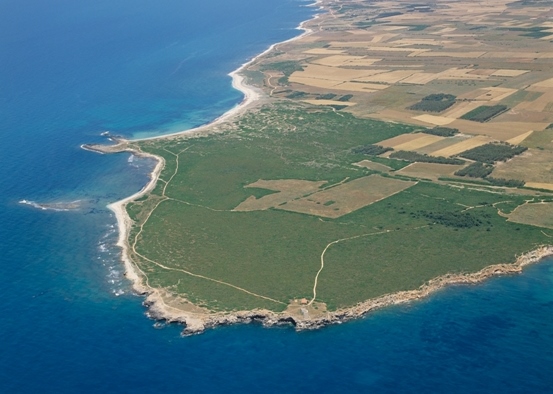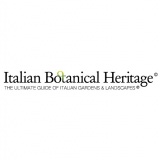
 Italian Botanical Heritage
Italian Botanical Heritage
Italian Gardens: Italian gardens Seu Natural Reserve
- WTI Magazine #97 Nov 18, 2017
-

 Italian Botanical Heritage
Italian Botanical Heritage
The Seu natural reserve is a calcareous promontory with a cliff of 15 m above sea level. It covers about 115 hectares and is an administrative part of the Municipality of Cabras in the province of Oristano, Sardinia. The area has a particular historical interest: the seat of human settlements already at the time of the Nuragic civilization, it was later inhabited by Phoenicians, Carthaginians and Romans and in 1550, due to its strategic position, the Spaniards built an imposing watchtower, later armed and fortified.
After a long season as private property of Don Efisio Carta of Oristano, already owner of the nearby ponds and fishmongers of Cabras, in 1981 it became a WWF protected natural reserve.
The area is distinguished by a remarkable naturalistic variety, from the Mediterranean scrub to sea dunes and halophytic vegetation, and having long been a private hunting reserve, Seu has been preserved intact in its variety and biodiversity. The coast sees a rich and luxuriant Mediterranean maquis with rosemary (characteristic of Seu the one with white flowers), Montpellier cistus (Cistus monspenliensis) or red cistus (Cistus creticus), lentischio (Pistacia lentiscus), myrtle (Myrtus communis), phillirea (Phillyrea angustifolia), olivastro (Olea european oliv). There is also a small pine forest made up of aleppo pines (Pinus halepensis).
The dune vegetation is characterized by the presence of species with highly developed radical apparatuses that anchor themselves in the sand in search of water: the sea lily (Pancratium maritimum), the sea ravine (Eryngium maritimum), ravastrello (Cakile maritima) and the maritime polygon (Polygonum maritimum). Some species manage to retain the sand and consolidate the dunes: the santolina of the beaches (Otanthus maritimus), the gramigna of the beaches (Agropyron junceum), the sandstone Ammophilous (Ammophila sandstone), the sea crucianella (Crucianella maritima) and the efedra (Efedra distachya).
The rocky coast, characterized by high salinity, lack of water, high variations in temperature and wind, is home to the rocky vegetation: lemon trees (Limonium tenuifolium), endemic species, the camphorosma of Montpellier (Camphorosma monspeliaca) and the frankenia (Frankenia hirsuta).
The seabed is one of the most varied and best preserved on the coast, with a rich fauna. The symbol of the oasis is the Sardinian partridge, but there are also numerous Sardinian sparrows, saltimpali, hoopoes, the chief and small havens, bee-eaters, larks, calanders, and strillocks. Among the birds of prey who frequent the area, buzzards, the lesser tree and the kestrel falcon. On the rocks there are Corsican seagulls, cormorants and sea swallows, while wild rabbits, foxes, snakes and tortoises abound in the dune zones.